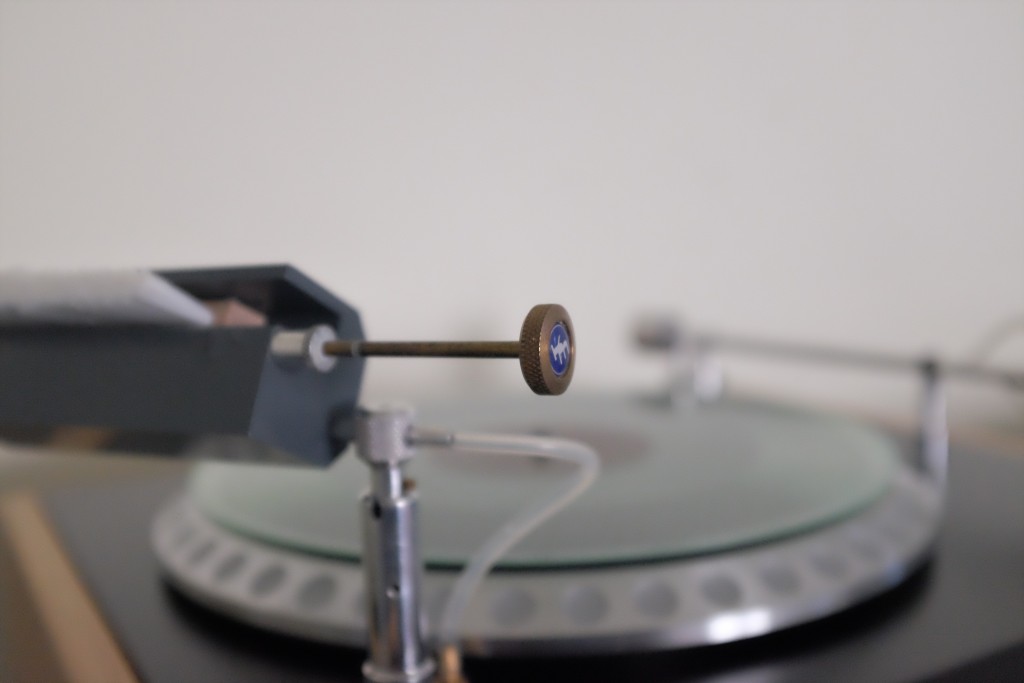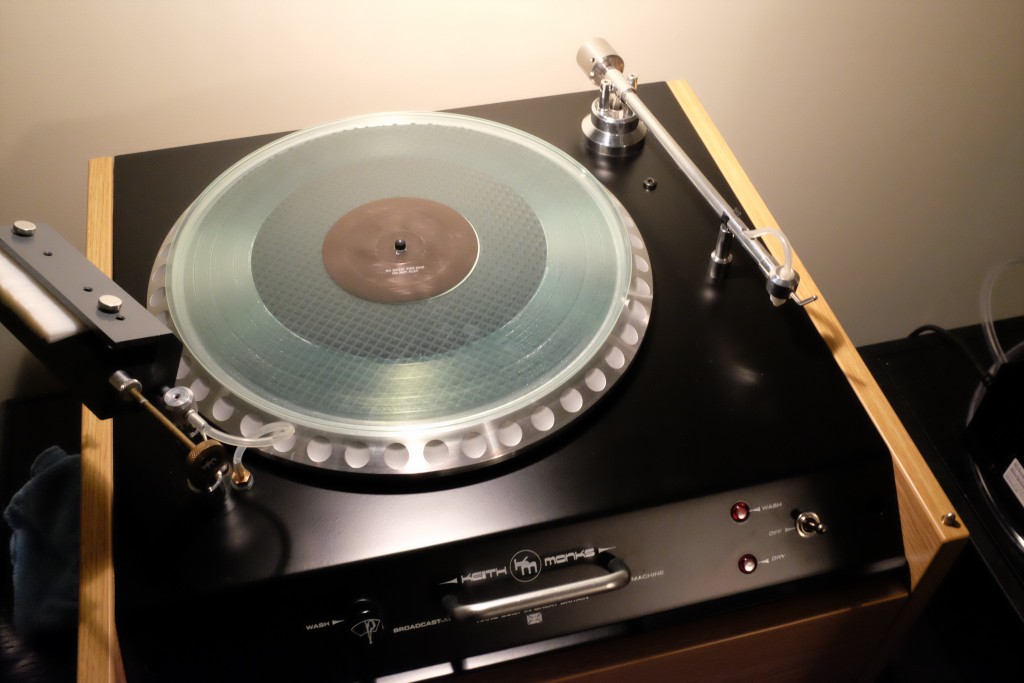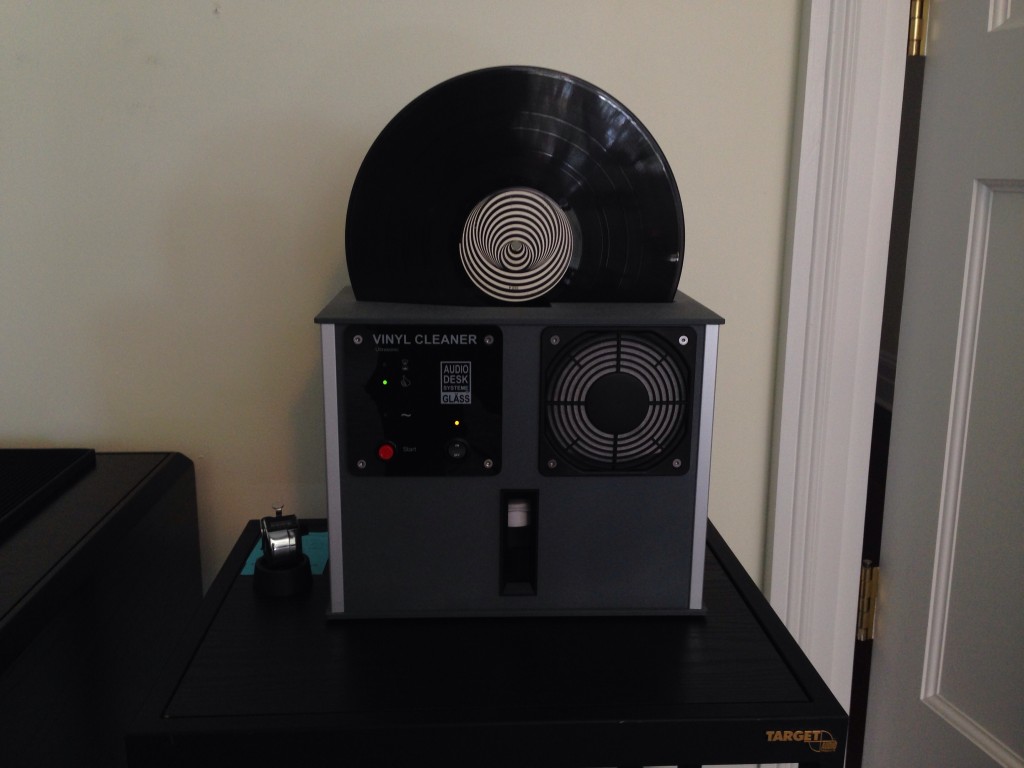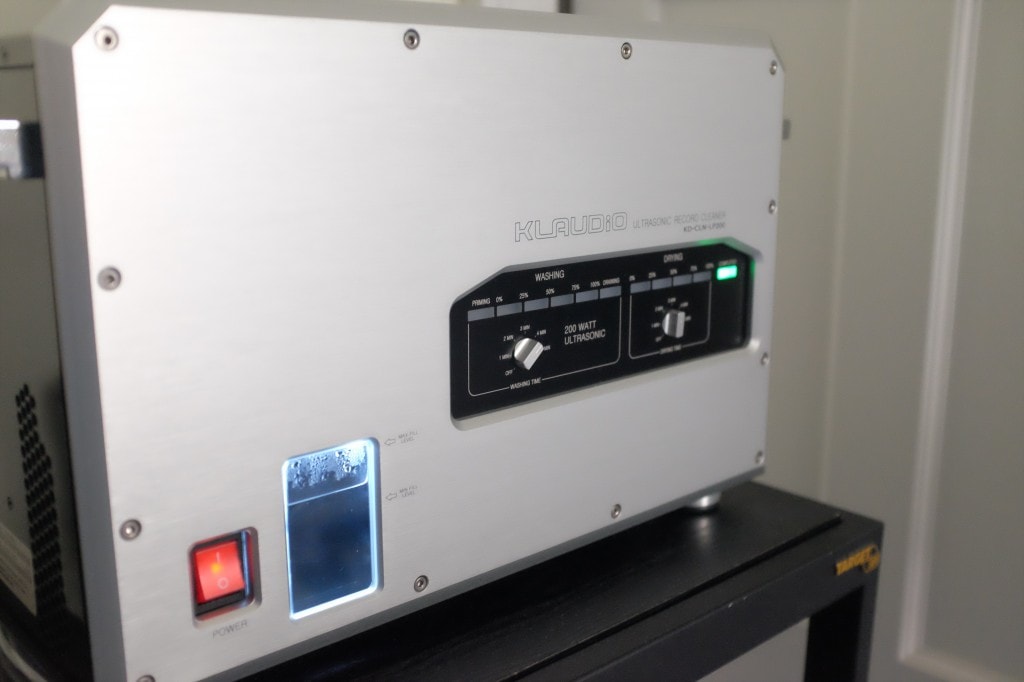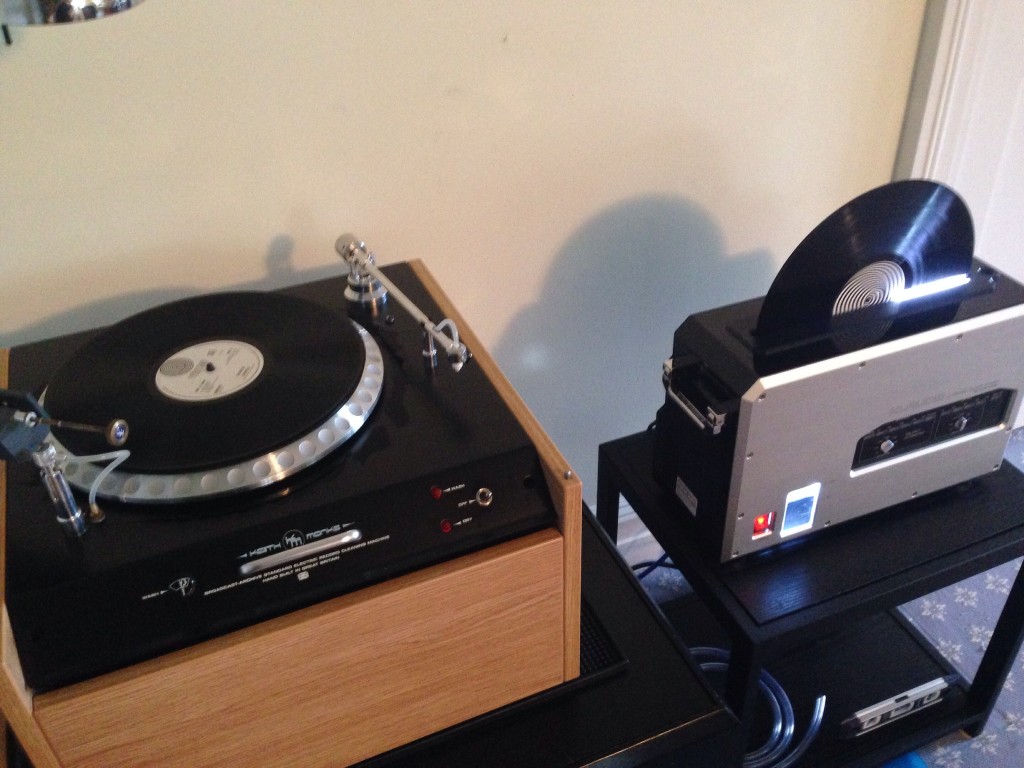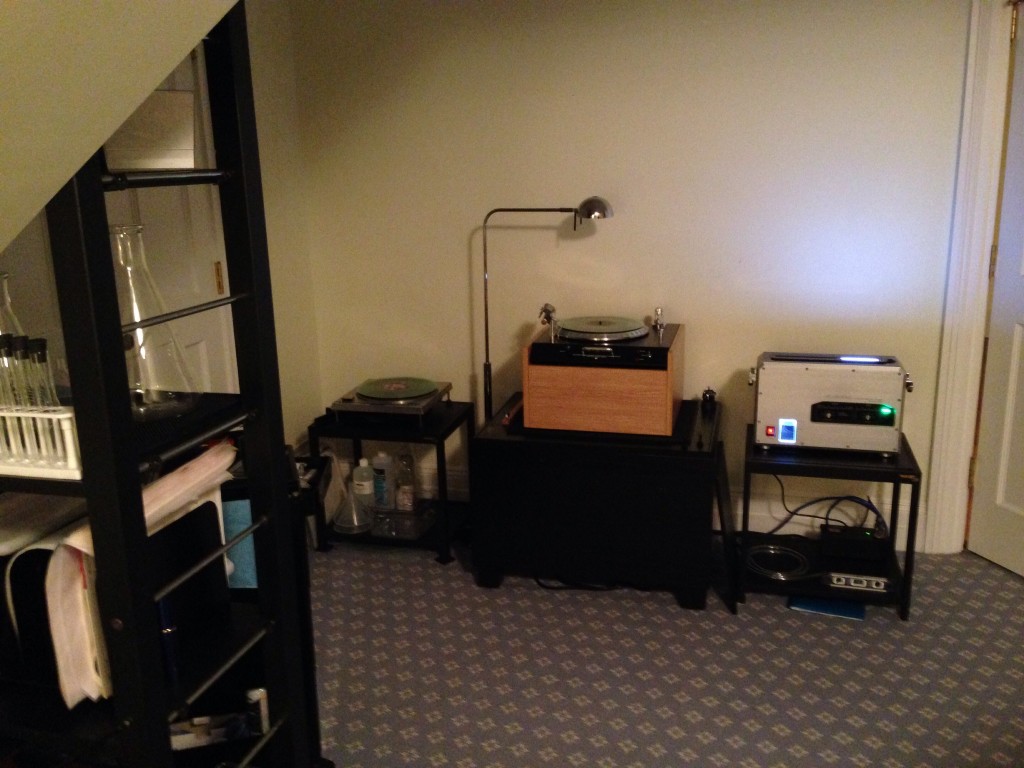My current approach to record cleaning grew from the casual use of a basic vacuum record cleaning machine (a VPI) to more studied efforts to improve the sound quality of older vinyl records that suffered from various forms of contamination. See Record Cleaning- An Introduction. I was cognizant of basic “good practices,” including those described by the U.S. Library of Congress website, which is a reasonable starting place, see Cleaning and Archival Standards of Care. But, in many ways, my more recent experience went beyond these basic practices.
An Oversimplified History of Cleaning Machines
I don’t know how many of you have read Percy Wilson’s seminal paper, “Record Contamination: Causes and Cure,” which was presented to the Audio Engineering Society in 1964 and published in the AES Journal in 1965. (The paper is available for download at the AES website for members and non-members may purchase a copy for $20). Although anything 50 years old in matters of science or technology may be considered suspect, I found it thought provoking in a number of respects. (Since we are dealing here with cleaning records, itself an “old” technology, much remains relevant).
Wilson, who was the Technical Editor of The Gramophone, sought to identify the most common contaminants affecting vinyl records (he also identified static as an issue) and proposed various approaches to addressing these problems; he also worked on a prototype record cleaning machine which is an ancestor of a commercial machine later offered by Keith Monks. (More about the Monks machine below). Wilson grouped contaminants into three general categories: particulates, fluids and condensates (from fumes). He also pointed to the fact that as a record spins on a platter, a vortex action is created, drawing airborne contaminants to the record surface and eventually, into the grooves. Wilson ultimately concluded that wet cleaning was the most effective for removing stuck particles and condensed film. (Loose particles, of the type a dry hand-held brush can sweep up are far less of an issue, but what is loose, and on the surface of the disc, can quickly become lodged into the grooves through playing or poor “cleaning” methods).
At the time the Monks machine was borne out of Wilson’s work, the main issues seemed to be a method to evenly and consistently apply the cleaning fluid (which was apparently little more than distilled water and alcohol) and to dry the record effectively so that the fluid/contaminant slurry did not remain in the grooves. These problems were “solved” by using a brush/fluid applicator head for fluid application, and a point nozzle vacuum arm for drying. The ingenious element, shared by the Monks and the later Loricraft (along with the now defunct Odyssey machine from Germany) was a thread which acted as a buffer between the point nozzle of the vacuum and the record surface; on the Monks, that thread (now nylon) is constantly refreshed as the drying arm sweeps its way across the record surface and the contaminated thread is forced back through the vacuum arm into the “waste jar” along with the contaminated fluid that is sucked off the record. It is a bit Rube Goldberg, but it works. The Monks was always a rare bird- expensive, made in fairly limited quantities and unavailable for a period after Keith Monks died, until his son, Jonathan revived production of the machine.
The most common record cleaning machines in the States, at far less cost, were the “wand” type vacuum machines offered by VPI and eventually, a number of other manufacturers, such as SOTA, Clearaudio, Hannl and Okki-Nokki. The other alternative, the Nitty-Gritty, has a fairly long history as well (both VPI and Nitty Gritty offered their first machines in 1981) and uses a slightly different method for fluid application and vacuum; rather than a vacuum arm above the record, the basic Nitty Gritty applies the fluid and vacuums from the downward facing side, allowing gravity to do some of the work. [1] At least in the States, the VPI and NItty Gritty seemed to be the most common machines used by audiophiles owing to their combination of cost and general effectiveness.
The Fluids
The machines and the technology associated with them were pretty well established, if not when the Monks was introduced in 1969, then by the early 1980’s, when the VPI and Nitty Gritty machines gained a market. The focus for the last couple decades thus seemed to what fluid to use to effectively clean vinyl. Today, we have a range of fluids from a variety of suppliers, including enzyme-based cleaners, “one-step” fluids and a host of multi-step fluid regimes offered by companies like Audio Intelligent, Mo-Fi, Walker Audio and others, like the Disc Doctor. Most cleaning machine companies also offer their own line of fluids. There are also home brews (including the use of industrial surfactant/wetting agents, like Tergitol, mentioned in the Library of Congress guidelines) and recipes to be found all over the Web. It was assumed, at least among users of the wand machines, that all of the machines did a decent job, although some offered additional features, like fluid dispensing, double-sided cleaning, reverse rotation and variable platter speed, none of which I considered essential for those on a budget.
Is it the Machine or the Fluid?
One thing that struck me when I began using a point nozzle machine regularly was that there seemed to be less focus on the particular fluid- the effectiveness of the point nozzle design in removing the contaminated fluid seemed to be the key. Because, at least in the case of the Monks, the platter rotates at high speed, you cannot soak a record without flinging fluid everywhere. My old VPI (which I still press into service occasionally) rotates at a far lower speed, and enables you not only to thoroughly soak the record and let the fluids do their work, but to agitate the fluids on the disc surface to enhance their effectiveness. In many respects, you are doing the “cleaning” –at least with the basic machines that require the user to apply the fluids; the machine provides vacuum suction and a platter for application and removal of the fluid from the record’s surface. Using these machines is as much about “method” as it is the machine or in some cases, even the fluid, which is why there are countless cleaning approaches described on the Web.
Ultrasonic Machines
The first commercially available ultrasonic vinyl cleaning machine was introduced under the Audio Desk Systeme brand from Germany several years ago (I believe the machines first appeared in the States in 2011), although the DIY community has been experimenting with ultrasonic record cleaning for years. More recently, a competitive machine, by KL Audio of Korea was introduced. Both machines are fairly expensive and have been widely reviewed in the audio press. One ambitious DIY’er has brought another ultrasonic device to market, known as the V-8, which not only cleans multiple records simultaneously, but is considerably cheaper than either the Audio Desk or KL. All of these machines rely on forced air drying (the V-8 manufacturer recently introduced a blower/dryer as a separate component for his machine).
Audio Desk Systeme Vinyl Cleaner
KL Audio ultrasonic record cleaning machine
My Experience
I bought my VPI in the mid-80’s, and used VPI’s fluid as well as various home brews, until I started using Walker multi-step fluids around 2007, when they first became available. I found that the use of an active enzyme supplied as a first step in the Walker process, followed by other fluid and water rinse steps, yielded an improvement- the records were quieter, and the music was brought out in greater relief against a quieter background. I eventually switched to AIVS No. 15 (an enzyme/surfactant in a single bottle), followed by a pure water rinse. At first, I purchased the “pure” water from Walker or other “audiophile” suppliers but eventually started buying it in quantity from lab supply houses. (Water grading could itself be the subject of an extensive article). [2] The water rinse was important for a couple reasons: first, apart from being recommended by the various fluid suppliers, the consensus seemed to be that some small amounts of cleaning fluid residue could remain on a vacuum-dried record; the water rinse thus provided another opportunity to remove this fluid residue and any remaining contaminants that had been loosened or absorbed into the fluid.
Optimizing use of the VPI involves: using different brushes or applicators for each fluid application step, as well as different vacuum wands for each fluid removal step. That meant buying multiple applicators and multiple cleaning wand/pillars (which are easily swapped out between each vacuum step). The other “tricks” were the correct orientation of the vacuum ‘slot’ so that the best vacuum/contact with the record surface was achieved; avoiding over-vacuuming, which created static (Wilson, in his seminal paper, actually recommended a drying process that would leave a slight amount of dampness to the record, to minimize static). [3] The big issue with this process is keeping all the materials in contact with the record surface clean between each application: thus, brushes or applicators should themselves be brushed and/or soaked in pure water, along with the “velvet” lips of the cleaning wand(s). I use clean toothbrushes to scrape my applicators and vacuum wand “lips” and small glass dishes that can be used as ‘wash’ receptacles for my brushes and wands during the cleaning process. Contamination of the record by a dirty brush or vacuum wand is a cure worse than the disease. All of this is time and labor intensive but gives fairly good results at relatively modest cost. I believe some sort of vacuum machine is essential (short of ultrasonic, which we will discuss more below) to remove the contaminated fluid from the grooves. Passive air drying, or wiping with a clean, dry cloth after a wash does not achieve the same results since the vacuum action is necessary, in my estimation, to remove the fluid/contaminant-laden slurry. In this sense, “drying” is not the same as “cleaning.”
I also use, as one of my main cleaning machines, a large Monks (one of the newer “Omni” machines; Monks has also introduced lower cost machines since the company was revived). Here, the differences in the effectiveness of the vacuum drying are even more apparent; the point nozzle simply does a better job than the wand-type machines, in my estimation, albeit at a price. It is also apparent that use of these types of machines focus more on the vacuum action of the point nozzle for effectiveness than on any combination of particular fluids. Because the Monks is less tolerant of “flooding” a record with fluid, given its rotation speed, I have tried a variety of additional fluids: my experience has been that if the record is not a “problem” record, the fluid differences are less pronounced in effect. But, if a record has been subject to years of contamination (I buy a lot of old records), the fluids still matter: I will use an enzyme cleaner, like the AIVS No. 15, followed by a lab water rinse on the Monks, just as I did on the VPI for these more difficult records.
I also use an ultrasonic machine. I have owned both the Audio Desk and the KL. Both do a very good job; some prefer the AD because of its wash rollers; others opt for the KL due to the simplicity of its design. At the price of these machines, it is really a Bentley v. Rolls argument for some. The AD does mandate the use of a company supplied fluid additive; I did not hear a sonic signature from this fluid, but I also reduced the amount of it I used based on other AD user’s recommendations. In the KL, I use reagent water, which I empty and refill frequently, e.g. every 35-50 records. Keep in mind that I am pre-cleaning every old record before it goes into the ultrasonic. This minimizes the amount of detritus in the ultrasonic bath (the AD has a water filter; the KL does not). Interestingly, the only time I saw any residue in the KL reservoir (which can be accessed through a hatch)[4] was after cleaning a batch of brand new records that I hadn’t pre-cleaned on the Monks.
My Current Cleaning Regime
All used records are pre-cleaned on a vacuum type machine, followed by a lab water rinse and vacuum and then finished in an ultrasonic machine. I will clean brand new vinyl by going straight into the ultrasonic machine if the record looks relatively clean (records are not manufactured in a clean room and if you look at a new record under a good light, you will often see fingerprints, marks as well as inner sleeve lint).
The advantage of multi-step, multi-method cleaning for older records is not just to keep the ultrasonic bath as clean as possible; I had several experiences when I first started using ultrasonic where I found that the record looked very clean, after washing, but still suffered from what sounded like “groove chew,”, i.e. irreparable damage to the groove walls that no amount of cleaning would change. But here’s where I had a revelation: I had purchased a few old Vertigo Swirls that had probably seen their share of cigarette (or other) smoke or fumes back in the day that, combined with other contaminants that were effectively glued or ground into the grooves, made these records unacceptably noisy. Ultrasonic cleaning, alone, did not completely remove whatever grunge was in the record. But, a long enzyme soak/vacuum, rinse/vacuum, followed by an ultrasonic cleaning did bring these records back to life. After these initial experiences, I found that a lot of records I had written off as damaged were actually suffering from deeply embedded contamination that a combination of cleaning methods worked more effectively to remove. Not always- some records were just damaged. But, in many cases, this multi-method approach seemed to achieve better results than repeated cleanings used the same single method.
Then, a well-known analog buff (known to the web community as Syntax) suggested trying to reverse the process; that is, cleaning in the ultrasonic (but not drying using the air blowers), followed by a point-nozzle vacuum dry on the Monks. It took me a few tries to get a decent work-flow using this approach. First, I still pre-cleaned the record before putting it in the ultrasonic, for the reasons mentioned above; then, into the KL, which can be set for ‘wash only’ (although a strong CAVEAT follows, below). Once the wash cycle was complete, I removed the wet record from the ultrasonic and vacuum dried it on the Monks. To avoid wetting the platter mat on the Monks (the wet side of the record would leave water on the mat that the now dry record side would touch once the record was flipped over for drying the other side), I switched out platter mats- a wet one and a dry one. The work-flow became pretty easy: but another revelation struck me: wasn’t the “drying” process of the Monks, using a point nozzle to vacuum and remove the fluid/contaminants better than simply blow drying the record in one of the ultrasonics? I think so. My experiments with this method, which I have labelled the ‘Syntax Reverse Clean” (in honor of the audiophile who first made the suggestion), enabled me to remove a wispy tracing distortion that seemed endemic to the last track of an old Neil Young pressing; several of my cherished Vertigos, which were a bit noisy, improved after this cleaning approach. I was also able to clean some early Columbia “6-eye” records and bring them to a very high state of play.
Now for the disclaimers and caveats. First, I know some skeptics will say, any series of multiple cleanings will, up to a point, improve a contaminated record. But, having gone through multiple cleanings of one method or another on some of these, there seemed to be a synergy by using different methods. So, let me tentatively suggest that it isn’t just the multiple cleanings, it is the various methods too.
Second, a big CAVEAT regarding the KL. Although the machine enables you to run a ‘wash’ only cycle, apparently KL Audio does NOT recommend this. I spoke to KL and was told their concern is that removing a wet record from the machine risks wetting the electronics in it. So, I’m going to make a recommendation or two below, that at least in my world, makes sense. Final disclaimer: I appreciate that some readers may think that all of this borders on fetish rather than practical advice. I know audiophiles with systems far more costly than mine who basically rely on ultrasonic and have largely given up using their Monks/Loricraft or other more conventional machines because they are time and labor intensive and perhaps their vinyl collections are largely comprised of records that they have owned since new or are entirely pristine. My only answer to this is that I’m willing to trade off convenience for extracting as quiet a performance as can be rendered from old vinyl. As a buyer of old vinyl, and some particularly rare or expensive old pressings, you are often going to be faced with contaminated records that need help.
One Suggested Approach
The combined cost of a point nozzle machine and a commercial ultrasonic machine is high. But in view of the results I have achieved using both methods in combination, one cheaper, effective point of entry may be to buy that V-8 ultrasonic machine (which until recently did not offer any drying function anyway) and a used Loricraft. (I know Loricraft offers a U.S. based service for rehabilitation of their machines, and occasionally offers factory specials. Monks machines don’t appear on the used market too often, but there is a facility in the States that is capable of restoring those machines as well). Short of that, buy a decent vacuum machine from one or another of the established manufacturers.
In a subsequent piece, we can look at “best practices” using a basic vacuum machine.
Bill Hart
______________
1. Nitty Gritty also offers machines which simultaneously clean both sides of a record.
2. There is a fairly comprehensive piece posted on Audiogon about various grades of water and what such “grading” means. See http://forum.audiogon.com/cgi-bin/fr.pl?eanlg&1132333988.
For a general description of different water purification methods, see https://www.emdmillipore.com/INTL/e…ation-techniques/M42b.qB.QHEAAAFAVVZkiQz9,nav.
3. Another good reason for a “pure” water rinse- if any fluid is left to evaporate, intentionally or not, you want that to be as uncontaminated as possible.
4. To clean the tank, I use clean room lab wipes that are non-impregnated and do not leave any lint. They can be purchased in bulk from a lab supply house.
